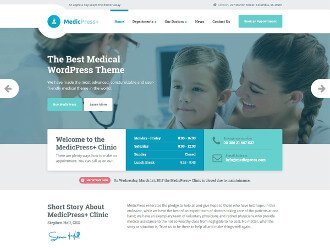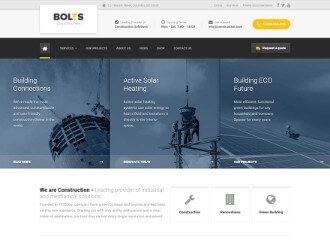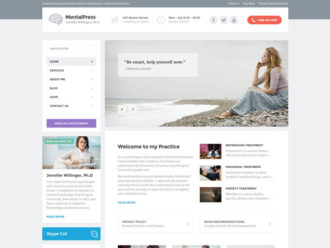Well, this is an easy one, if you know how to do it, otherwise it can give you a terrible headache! Although there are plenty of tutorials on the web, we still receive a lot of requests regarding this specific question, so today I’ll take you through 3 different methods. Don’t worry. This is not that hard and you can easily do it by yourself. You really don’t need your geek friend for this 🙂
1. The most common way: use a plugin
Adding a GA tracking code through a plugin is the most common and simplest way, but it isn’t necessarily the best option. Remember what we wrote about plugins? They are awesome, but often you don’t really need them. Besides, if you choose a poorly written plugin, it can slow your website down and then you’ll have more trouble than benefits.
Anyway, the bright side of this method is that you can easily exclude yourself (as an admin) from tracking. What’s the point of tracking your own visits? You will only get a distorted analytic picture. As you will see later in this post, you can easily exclude yourself directly in the code.
There is nothing wrong with this method; it’s just that there are better options 🙂
2. The more or less OK way: add a GA tracking code directly to your theme
You can copy and paste a GA tracking code directly into your theme’s header.php, right after the tag. Easy, right?
BUT when you update your theme, this part will be overwritten, so you have to copy and paste the code again. Personally, I always use this method and I keep this in my mind when I do an update. Or you can create a WordPress child theme, copy header.php from the parent theme to the child theme and then you don’t need to worry when you update the parent theme.
3. The easiest way: find a GA field in your theme’s options
Go to Theme Options or live customizer and search for a Google Analytics tracking field, code or something similar. If you have one of our themes, copy and paste your code into the Custom Java Script field and … you’re almost done.
Different ways to exclude yourself from GA
Remember, you want to exclude yourself from your analytics reports (and the same goes for other admins). Again, there are different ways to do this, like Chrome extensions or applying different filters in the GA admin page. Again, there is no right or wrong way to do this, but in this post I will try to show you the easiest way.
If you have a static IP address, you can exclude yourself by creating a new filter in the GA admin page, or you can add this to your PHP code:
<?php if ( ! is_user_logged_in() ) { ?>
<!-- your Google Analytics code goes here -->
<?php } ?>This excludes all logged-in users. 🙂
Now you know how to add Google Analytics tracking code to your site. All you have to do now is check in regularly and see how your website is doing when it comes to traffic and visitors. However, Google Analytics can be a little overwhelming at first. So how do you know what to pay attention to and what metrics to keep an eye on? Read on because that’s exactly what we will cover below!
User Demographics and Interests
One of the most important metrics to keep track of is user demographics and their interests. You can access these two metrics by going to Audience > Demographics > Overview and Audience > Interests > Overview.
The two metrics are crucial if you want to learn more about the people who visit your site. This allows you to see if your visitors align with your ideal client or customer avatar and it also allows you to learn more about their buying and browsing habits as well as tell you what industry they belong to.
Why does this matter? By knowing your visitor’s habits, preferences, and industry, you can create powerful ad targeting campaigns as well as improve the content on your site.
For example, let’s say you find out that your website is attracting a lot of the people in the same industry as you instead of your intended customers. Or, if you’re trying to attract a young female audience and your analytics tells you that your visitors are predominantly men in their 30-ies.
Based on this information, you can conclude that there is a disconnect between the content your putting out and the audience you’re trying to attract. You can use this information to improve not only the content on your site but also make improvements to the design of your site which also contributes to making a connection with your ideal audience.
Traffic Sources
Keeping track of your traffic sources allows you to see where your visitors are coming from. To find this metric go to Acquisition > Traffic > All channels. The overview tab will let you see all the channels that sent visitors to your site.
Usually, this will include different search engines like Google, Bing, DuckDuckGo, and others. It will also list various social media platforms such as Facebook, Instagram, Pinterest, and Twitter.
Finally, it will also show you other websites that sent you visitors. This could include websites that linked to one of your articles or pages as well as websites where you contributed content.
This metric is important because it allows you to easily see which one of your marketing efforts are paying off and which aren’t bringing you good results.
You can get even more granular and click through to the Social tab to get more specific results for each of the social media platforms you’re active on.
By knowing which social media platforms is sending you the most visitors, you can make data-driven decisions about your marketing strategy and decide to focus on the best-performing platforms. This means you can stop wasting time on platforms that aren’t bringing you any return on investment so you can focus your energy elsewhere.
It’s worth mentioning that if you’re running ads, you should definitely check the Google Ads tab under the Acquisition tab as it can give you even more insight into how your ads are performing.
Search Queries
Thanks to the Search Queries metric, you can find out which words and phrases people used to find you. In other words, you can find out what they are entering in Google’s Search Engine and how those terms led them to your website.
You can find this metric by going to Acquisition > Search Console > Queries. How is this helpful? Well, not only does this make it easy to see how well you’re ranking for your desired search terms, it can also give you a list of keywords that you can use when creating new pages and posts on your site.
For example, let’s say you have an online store for sports and gym equipment. Using the Queries metric, you find out that people searched for terms like sports diet or gym nutrition plan.
You can use this to write a blog post with a title “What’s the best nutrition plan when you’re going to the gym?” or “The Perfect Sports Diet That Gives You Rock Hard Abs”. You can also use these two posts to highlight specific exercises they can do while they’re at your gym or announce a discount for a gym membership.
In other words, the search queries give you even more opportunity to market your website and create content that your audience is looking for. The end result means more visitors to your site and ultimately more sales and more profit.
Most Popular Content
Another important metric to keep track of is your most popular content. You can get to this metric by going to Behaviour > Site Content > Content Drilldown.
This will show you every page and every post on your site that has been ranked in the search engines. It will also show you which posts and pages are the most popular in terms of pageviews and unique visitors.
Armed with this information, you can make informed decisions about your content marketing strategy. For starters, you can use this knowledge to optimize those posts and pages for conversions by adding lead capture forms, email optin forms or buy buttons, depending on the type of business and website you run.
You can also use this knowledge to notice any patterns such as topic categories that get the most views and visits or that certain sales pages are more popular than others.
This allows you to improve posts and pages that aren’t performing as well by modelling your popular content. It also makes it easier to keep producing similar content that your audience will love.
Once your visitors see that you keep updating your site with content they enjoy, they will be more likely to keep coming back to your site instead of running off to your competitors.
Exit Pages
At first glance, exit pages might seem like a negative metric to keep track of. However, if you only focus on what’s working, you are missing the opportunity to fix what isn’t working and that could mean all the difference between having a positive cash flow and leaving money on the table.
Exit pages show you where visitors left your site without clicking through to other pages or blog posts. You can find this metric by going to Behaviour > Site Content > Exit Pages.
Once you know the percentage of people who leave a particular page without viewing anything else, you can decide whether the page should be improved and how. If the exit rate is low, chances are nothing needs fixing.
But a high percentage indicates that the content on the page isn’t giving your audience enough reason to stay and explore your offers further.
You can then take steps needed to improve the content. This includes:
- Providing more details on the topic
- Linking to other posts or pages on your site
- Including a link to your services or shop page
- Adding an optin form so you can capture their email address.
Audience Behaviour
Keeping track of your audience behaviour allows you to see how many new visitors and how many repeat visitors your website is getting for a given time period. You can find this metric by going to Audience > Behaviour > New vs Returning.
Finding that your website is getting a steady stream of new visitors means that you’re starting to get noticed online and your marketing strategies are paying off. Ideally, this number should be growing as it’s a sign of increasing brand awareness.
Returning visitors, on the other hand, represent visitors who keep coming back to your site. While you may not think they are as important as new visitors, the truth is that returning visitors indicate that your content is compelling enough for people to come back to.
The reality is that you will rarely convert a new visitor into a client or a customer. They aren’t familiar with your brand yet nor do they have any reason to trust you, your services or your products.
But repeat visitors have already established a relationship with you and they know what you have to offer. They trust you enough to come back to your site and therefore have better chances of converting into buyers. As such, you need to keep track of this metric and ensure that your website is seeing a steady increase in both new and repeat visitors.
Mobile Overview
Lastly, the final metric you should keep track of is mobile overview. Mobile responsiveness matters even more nowadays than it did a few years ago.
Given that more and more people are using their phones to browse the Internet, it’s important that your website looks good even on smaller screens. Not only are more people using their mobile devices, but Google has also said that they will be indexing mobile-friendly websites first.
Going to Audience > Mobile will tell you how many visitors are visiting your website from a mobile device and how many are coming from desktop devices.
The results here will vary depending on your audience. For example, if you’re targeting a young audience known for using mobile phones but you’re seeing a decline in your mobile traffic, it could be a sign that your site is not as optimized for mobile devices as it could be.
If, on the other hand, you see a steady growth in mobile users, it signals that your website is healthy and has better chances of ranking well in search engines.
And now?
GA is a powerful tool. It will give you good and true insight information about your website and your audience. At first, you’ll probably find it a bit challenging, but take it step by step. You probably don’t need half of the tools there, anyway. Take a step back and breathe – it’s not that hard to understand.
If you are a bit lost, the official support provided by Google Analytics is a good way to start. It has loads of tutorials, videos and a very good support forum. Besides the official guide, you’ll find a lot of blogs and posts, dedicated to GA, no matter what your level of expertise is. Just remember to take it slowly, and soon you’ll learn the difference between sessions, visitors and page views and why a low bounce rate is actually a good thing.
Finally, don’t be worried about the quantity of traffic, but as always, focus on quality!
Happy tracking 🙂





















